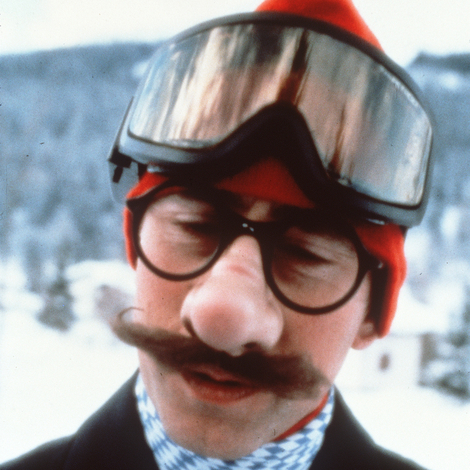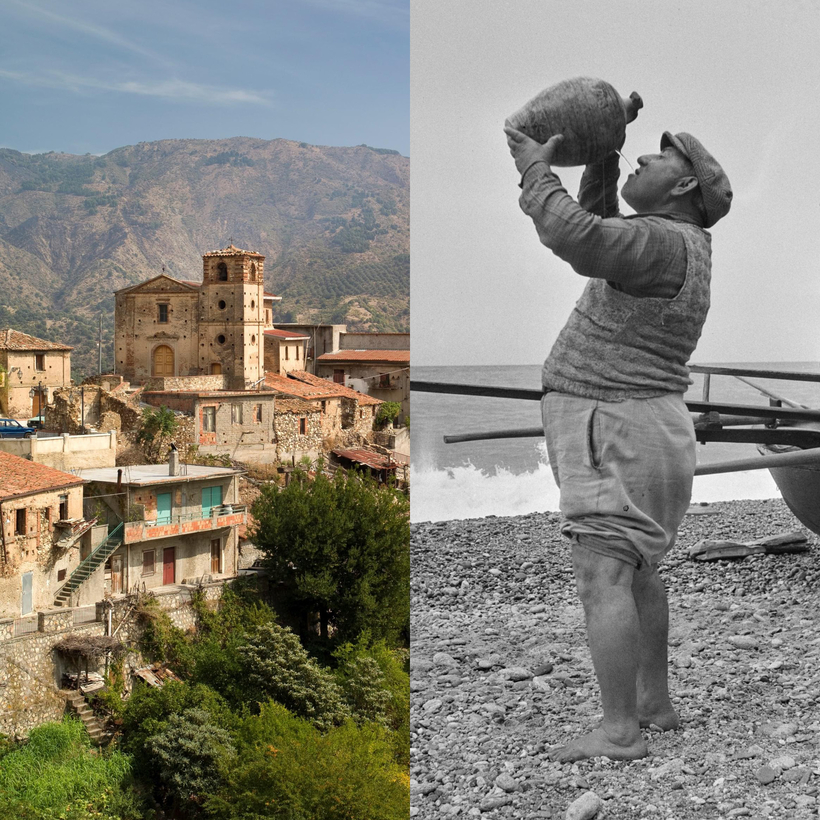In Calabria, on the “toe” of Italy’s boot, lie four mountain ranges: the Aspromonte, Sila, Pollino, and Serra. From afar, Gallicianò, a remote town at the base of the Aspromonte, looks like a Nativity scene. At the entrance to the town, a Byzantine-style shrine greets visitors, its mosaic depicting a gold-haloed Christ holding a cross in one hand and extending the other.
Gallicianò has a population of about 60 people and no phone signal. The Italian papers have long called it a “ghost town.” In the square, 20 locals mill about, waiting for a bread truck. When it pulls up, the driver calls out, “Kalimera”—Greek for “Good morning.”
“Kalimera,” replies the old woman at the front of the line.

Gallicianò is no ordinary Italian town. Its center is called Platia Alimos, Greek for “Alimos Square.” A sign outside a trattoria reads “Eat, drink, and be well” in Greek. And the façade of a working Greek Orthodox church, the Panaghia, features small votive figures floating among portraits wrapped in gold leaf.
Gallicianò, or the “Acropolis of Magna Graecia,” is the main town in a constellation known as “Greek Calabria,” which also includes Bova, Roghudi, Ghorìo di Roghudi, and Bova Marina. In this region, just over 100 people still speak Grecanico—a Greek dialect preserved for three millennia by the region’s remoteness.
Some historians trace the Grecanico language’s roots to the Greek colonies of the eighth century B.C. The Romans arrived in Calabria 600 years later and renamed the region Ager Bruttius.
Yet, cut off from the rest of the country by the mountain ranges and poor roads, these villages remained linguistically sealed for centuries, even as waves of conquerors—after the Romans came the Byzantines, Normans, and Bourbons—imposed new tongues. And so Grecanico endured, carried from mothers to daughters, fathers to sons, in lullabies and church chants. It was never codified—local schoolchildren are taught in Italian—but it survived in kitchens and fields.
In the 18th century, major earthquakes killed tens of thousands of people in the region. When Edward Lear wandered its mountains in 1847, recording his impressions in Journals of a Landscape Painter in Southern Calabria, he found a land of mule trails and houses where travelers relied on local hospitality. “[There] were no inns in that province except on the coach-road,” he wrote.
Ensuing poverty drove mass emigration in the late-19th and early-20th centuries. Entire villages emptied out as people left for the Americas or Northern Italy. Those who stayed lived in increasing isolation.

In 1948, the Italian weekly L’Europeo published an exposé on Africo, a town 18 miles from Gallicianò. “There are people who have never seen a train or a car—not even a horse-drawn carriage,” wrote the story’s author, Tommaso Besozzi. The 2,000 residents reportedly kept goats at the foot of their beds, and most could not read or write. Today, not much seems to have changed, except that populations have dwindled even further. Calabria is still, for the most part, bypassed by commercial tourism.
The region is also home to the ’Ndrangheta, now allegedly the richest organized-crime network in the world. (A 2023 study by the Institute for Security & Development Policy, a Stockholm-based nonprofit, estimated its annual revenues to be around $72 billion—more than three times the combined income of all the Mexican cartels.) Unlike the flashier Camorra, of Naples’s Campania region, or the Cosa Nostra, of Sicily, the ’Ndrangheta thrives in silence. Its bosses live in modest mountain houses, drive battered cars, and spend afternoons smoking and playing cards in cafés. (Gallicianò may be a town of just 60, but up until recently, it had a local ’Ndrangheta boss; Italian authorities arrested 72-year-old Giuseppe Nucera in 2018.)

The region’s remoteness, coupled with the major Mafia presence, is likely what’s helped keep international tourists away. Yet to some, Calabria’s mysteries are its allure. The Riace bronzes, a pair of towering, ancient bronze statues pulled from the sea off of Calabria’s “Rainbow Coast” in 1972, remain shrouded in legend. So does the Dragon Rock, or “Rokka du Traku,” a boulder in Aspromonte National Park named for its resemblance to a three-eyed dragon. (Local legend says a blind dragon once lived beneath it, feeding on milk collected in rocky hollows—the “milk cauldrons.” Another tale claims the dragon guarded a treasure, revealed only to one who sacrificed a goat, a black cat, and a child.)
More than anything, it’s the Greek dialect that makes this place singular. Today, local activists are working to revive it through song, festivals, and courses in the nearby city of Bova. “There’s only a few hundred of us left,” said Tito Squillaci, a leader in the fight to keep Grecanico alive. “I’m one of the youngest, and I’m 71 years old.”
Elena Clavarino is the Senior Editor at Air Mail


